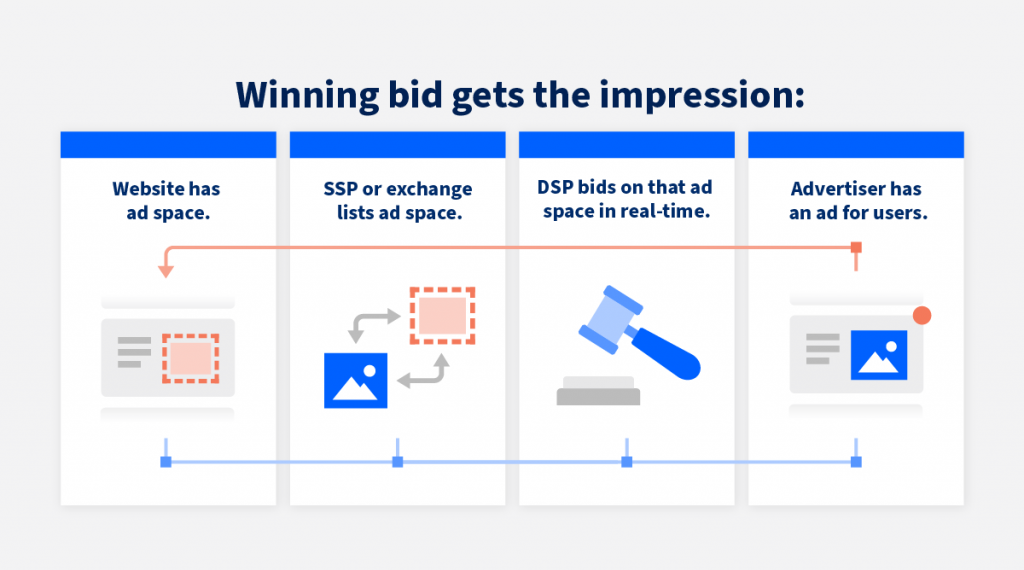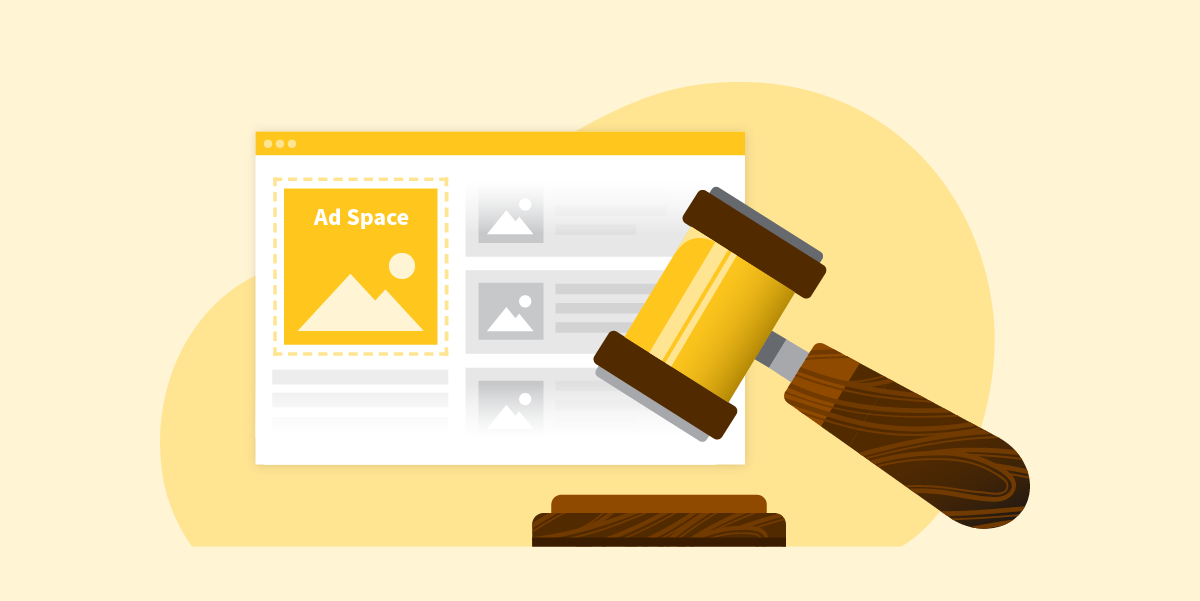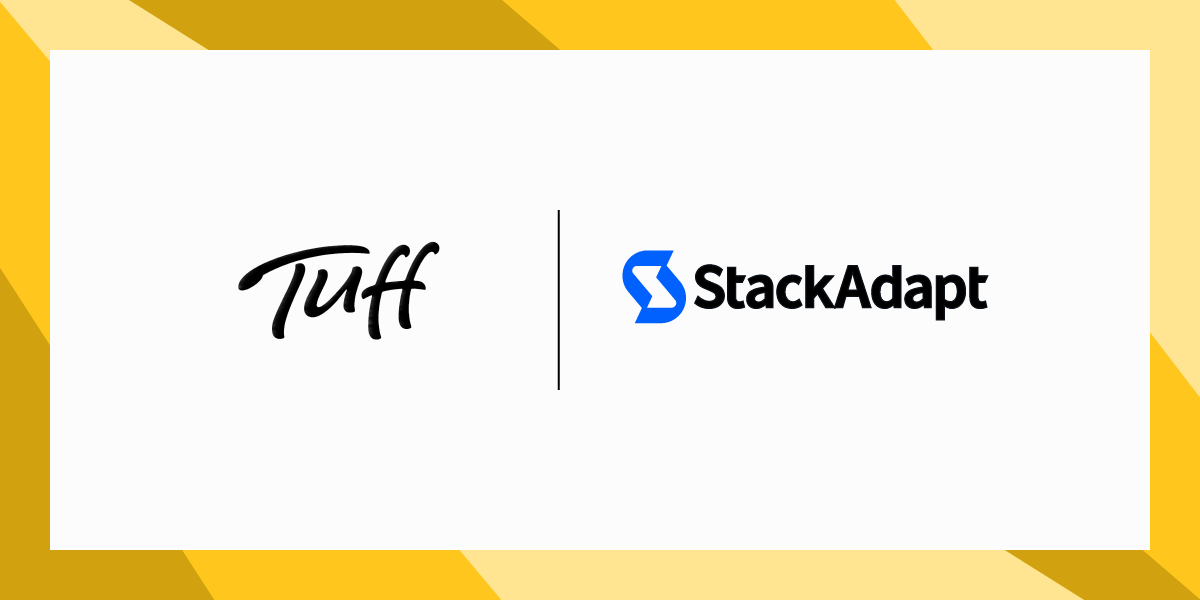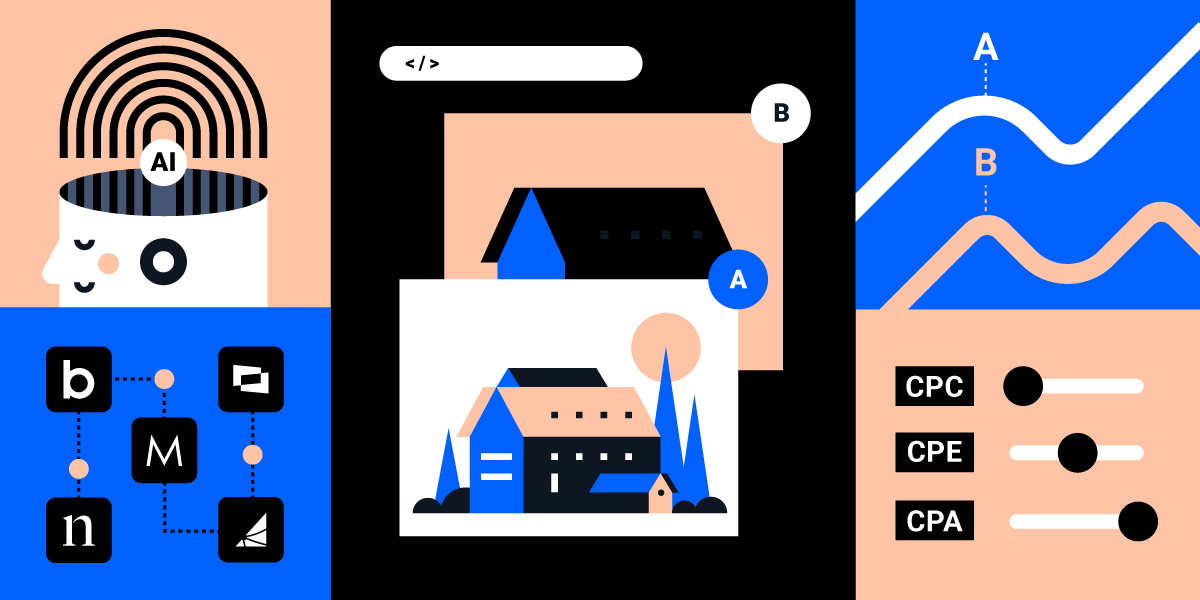The concepts of real-time bidding (RTB) and programmatic advertising can be confusing. This is because the terms refer to a similar process. Although they are definitely related, RTB and programmatic aren’t interchangeable.
It’s important to understand the difference between real-time bidding and programmatic because they have distinct roles in the advertising process. Let’s break down what both are, their differences, and how real-time bidding and programmatic are related.
What is Programmatic Advertising
Programmatic advertising is a process for buying and selling digital advertising space that is automatic, rather than the traditional, manual process. This automatic process serves ads at the right time, and at the right price.
Programmatic advertising leverages various technologies, like machine learning and artificial intelligence, to give advertisers the ability to use defined parameters to place their ads. Digital advertising inventory can be bought through programmatic across the web, mobile, apps, video, digital billboards, and social media.
How does programmatic advertising work?
To run programmatic campaigns, media buyers work with a programmatic platform, like a demand-side platform (DSP). A DSP is a digital campaign platform that provides advertisers with features for buying ad placements online in real-time.
A DSP provides access to features that support programmatic campaigns from start to finish. It typically provides planning tools, an ecosystem of programmatic channels, and the ability to view domain-level performance, geo performance, audiences, and more.
What is RTB Advertising
Real-time bidding (RTB) is the process in which digital advertising inventory is bought and sold. It’s a process that happens in less than a second, as part of an instant auction. RTB advertising is typically facilitated by a programmatic platform, DSP, or an ad exchange.
How does real-time bidding work?
RTB advertising is essentially an instant auction. When a user visits a website, a corresponding bid request is sent to an ad exchange, which is a digital marketplace that enables advertisers and publishers to buy and sell advertising space.
This bid request will contain various types of information about the user, like their demographic data, location information, and browser history.
The ad exchange then passes the bid request along to its list of advertisers and buyers, who bid in real time for the ad impression.
The advertiser that bids the highest amount wins the impression, and their ad is served to the user. Ad impressions are bought and sold in RTB transactions in the blink of an eye. They happen so quickly and so often that, for example, the StackAdapt DSP platform processes over 2 billion auctions each day!

The Benefits of Real-Time Bidding
RTB represents a part of the programmatic media buying process, whereas programmatic describes the entire media buying process. You can think of RTB as being one piece in the larger programmatic ecosystem.
RTB plays a significant role in this ecosystem, but it isn’t the only media-buying method that programmatic can leverage. It’s actually possible for publishers to sell their inventory without the use of RTB. For example, publishers can sell inventory through programmatic guaranteed or direct.
There are several benefits that RTB delivers, for both advertisers and publishers. Let’s unpack 6 of the main ones.
1. Streamlined buying. RTB streamlines the buying process for advertisers. The buying process is efficient and it helps fine-tune user targeting by allowing advertisers to select relevant inventory that will drive results.
2. Optimized campaigns. RTB allows publishers to optimize their campaign performance by adjusting campaign budgets in real-time.
3. Wider inventory selection. RTB opens inventory up to a wider ecosystem of media buyers, and the auction process drives more revenue for publishers.
4. Increased transparency. With RTB, publishers have visibility into what advertisers and buyers are bidding on and purchasing. This gives publishers insight into what ad placements are premium spots.
5. Added flexibility. Publishers and advertisers have flexibility with RTB because both can set parameters for the auction. For example, publishers can set minimum bids and advertisers can set their maximum bids.
6. Optimized bidding. For added success with RTB campaigns, you’ll want to focus on developing optimized bidding through strategies like bid factoring and creative tactics.
Understanding Programmatic Advertising vs Real-Time Bidding
The term RTB describes something different from programmatic advertising. RTB refers to the technology that programmatic advertising leverages, whereas programmatic describes the larger concept and ecosystem around programmatic ads.
Understanding the difference between RTB advertising and programmatic means you’re able to identify when RTB advertising is the right fit for your programmatic campaigns. In some cases, other processes for placing your ads, like programmatic direct, might make more sense.
By understanding what RTB advertising is and how it fits into the programmatic landscape, you’re able to not only speak about programmatic confidently, but plan your campaigns with confidence.
FAQ: Programmatic vs RTB
RTB stands for real-time bidding. This is a process by which advertising inventory is bought and sold. RTB uses an instant auction to sell inventory, on a per impression basis.
A real-time bidding (RTB) system allows digital advertising inventory to be bought and sold at an auction that occurs in less than a second. RTB advertising is typically facilitated by a programmatic platform, DSP, or an ad exchange.
Programmatic and real-time bidding are not the same. Real-time bidding is a process for buying and selling ad inventory, which represents a part of the programmatic media buying process. Programmatic describes the entire media buying process.
Real-time bidding streamlines the ad-space buying process for advertisers. It allows publishers to optimize their campaign performance by adjusting campaign budgets in real-time, it opens ad inventory up to a wider ecosystem of media buyers, and it gives publishers visibility into what advertisers are purchasing their inventory.
Want to run exceptional programmatic campaigns? Request a demo to learn more about StackAdapt.





